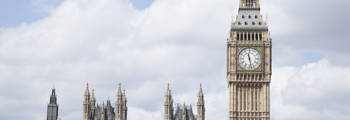06/04/2023
The Building Safety Act 2022, introduced new limitation periods for causes of action under the Defective Premises Act 1972. The previous limitation period for such claims was 6 years from completion but claims can now be brought providing they accrued within 30 years of 28 June 2022. This gives rise to new claims that had previously been statute barred.
In URS Corporation Ltd v BDW Trading Ltd [2023] EWCA Civ 189, the Court of Appeal addressed amendments to pleadings in light of this extended limitation period.
Background
The developer, BDW Trading Ltd (BDW) appointed URS (URS Corporation Ltd) to provide structural designs for residential buildings that were developed and owned by BWD. Following the Grenfell Tower fire, investigations were undertaken by BWD into the safety of the buildings which showed serious structural defects in several buildings.
Despite the works being complete and BWD no longer owning the buildings, BWD felt that given the seriousness of the defects, as a responsible developer, it was important to ‘make the buildings safe’. However in doing so they incurred, or will incur, considerable expenditure and therefore commenced proceedings against URS to recover these costs.
URS’s position was that BDW’s cause of action arose upon discovery of defects in 2019, by which point the properties were not owned by BDW and they therefore had no proprietary interest and suffered no loss. The Court however decided that BDW’s cause of action accrued no later than the date of practical completion and therefore the losses were recoverable.
However, URS appealed and following permission to appeal being granted, the Building Safety Act 2022 came into force with section 135 extending the limitation period for claims under the Defective Premises Act 1972.
In reliance on this extended limitation period, BDW successfully applied to amend their pleadings to instead bring a claim under the Defective Premises Act. URS launched a second appeal against this application as they felt the previous judge had applied the wrong test and that no new claims added by the amendment had any reasonable prospect of success.
Decision
The Court granted permission to appeal in both respects and Lord Justice Coulson acknowledged that section 135 of the Building Safety Act “is novel, and the issues to which it gives rise have never been considered before”.
Anyone involved in claims with historic building safety defects will need to keep a close eye on this case as any guidance on the issues will be helpful given the procedural implications which the Act may have going forward.
This article was co-written by Stephanie Atkins, Trainee Solicitor.



